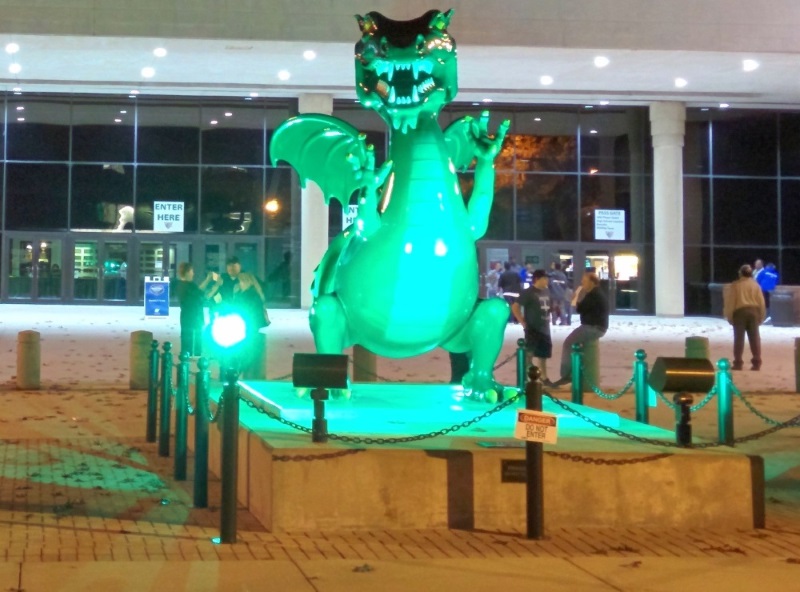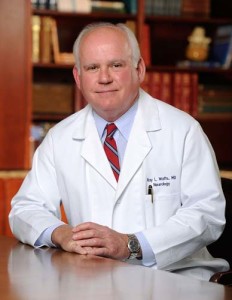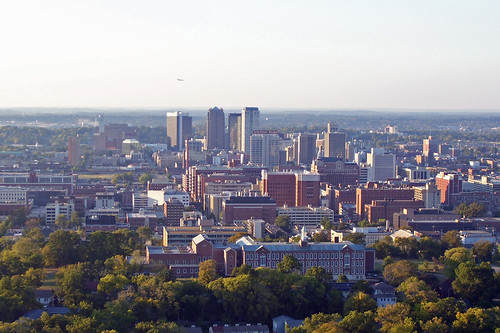 I’ve been sitting back and watching all the buzz online today with regard to UAB while starting to get ready for my turn to manage a weekly online journalism chat, but I’ve got to share some of the thoughts and questions on my mind:
I’ve been sitting back and watching all the buzz online today with regard to UAB while starting to get ready for my turn to manage a weekly online journalism chat, but I’ve got to share some of the thoughts and questions on my mind:
1) I’m still wondering why Jabo Waggoner has stayed so quiet for so long? Why is that what’s on my mind? A timeline I created for a presentation about this suggests both Williams AND Waggoner were present for a late October meeting with UAB officials. Williams has been quite vocal while Waggoner’s made very few statements.
2) Most of the buzz from today jives with earlier statements made. Just because we don’t always pay attention to what’s been said doesn’t mean it hasn’t been public. It may just mean that emotions are strong on this issue (and rightfully so).
3) Assuming the bill that requires UAB must field a team passes, how do we as a community make sure the university as a whole (and the athletics department in particular) is not in this same position in 4-5 years? If UAB is going to get back a football team (and I, for one, hope that’s the case at some point), how is a similar financial situation kept from happening again? We will be making history anyway as the first state in the country to require that a university field a football team, so we probably want to make sure it stays viable to field teams for as long as possible (especially as we wait to see how the state will attempt to handle its own funding gap in the coming months).
4) Why did so many folks “wait to be asked” to do something if it’s been an issue for years? I’m not talking about those who’ve long served faithfully as boosters to the program, but those who would’ve made the burden less stressful (i.e., major corporate citizens). If it’s always been suggested that we must volunteer to lead instead of waiting to be asked, why point to not being asked as a reason for sitting on the sidelines instead of seeing the need and filling it? Will “they” step up and serve if asked (as they will need to moving forward)?
Then again, perhaps that same question can be asked about several issues currently facing the city and the region…
5) Can we take a moment and say how proud we are of the men’s basketball team for their NCAA tournament run for a little while longer? They did their university and this city proud and will probably be on more than a few radars next year.
6) When we look back, will this be a case of attempting to see what will get the home rule debate before the state’s citizens in a palatable way? If you take out UAB and insert the name of any major city in the state, isn’t it really about home rule? Is a constitutional amendment regulating an athletic team as important as ones that deal with the issues truly affecting the state right now? I’m a home rule fan. I’m not a fan of home rule with strings attached being dictated by the Legislature as is the case right now (see Question #3).
It may be oversimplifying a lot of what’s going on today, but it’s what I’ve got. Chime in if you have a moment (or if I’ve missed some questions — and believe me, there are a lot more that need to be asked of all sides on this one).
###
By the way: Before I forget, I’d like to acknowledge a former UAH athlete not getting a lot of attention in Alabama in recent weeks – Cam Talbot. Talbot is the backup goalie for the New York Rangers and, in the absence of their number 1 goalie due to a damaged blood vessel, he’s once again proven he’s, as the Wall Street Journal calls him, “the best insurance policy in the NHL.” 36 saves last night alone – insane.
André Natta is the stationmaster of bhamterminal.com.





 There’s a commonly held stereotype that doctors don’t all have the best bedside manner. I’ve been lucky to know a few doctors in my life (some as friends, at least one as family) that don’t measure up to that perception; they’re engaging, informative, and personable. Unfortunately, the last 48 hours have demonstrated that it might actually apply to UAB president Ray Watts (especially after the release of
There’s a commonly held stereotype that doctors don’t all have the best bedside manner. I’ve been lucky to know a few doctors in my life (some as friends, at least one as family) that don’t measure up to that perception; they’re engaging, informative, and personable. Unfortunately, the last 48 hours have demonstrated that it might actually apply to UAB president Ray Watts (especially after the release of  There have been
There have been 



Why is the downtown Publix really a game-changer?
Now, I’ve lived in the greater downtown area since 2004, and I’ve always had as few as four and as many as six major options available to choose from within 2 miles, but I had to drive to them. When people ask me “Where and how do you get groceries?” I admit I’ve long ago started replying by asking them, “Well, where and how do you get yours?” I get a stunned look, but most times they seem to get what I’m saying. That said, it’s not an option readily or easily available to a significant number of our city’s residents.
This leads to my first reason why it’s a game-changer:
It’s more about WALKING now than DRIVING. Yes, there’s a parking deck that will sit between the ground floor space and the 36 “loft-style” apartments planned for the top the building. The vehicles using these spaces though will be off-street and out of sight. The idea of needing to circle forever to find a spot or the installation of a surface parking lot to handle capacity doesn’t even come up in conversation – and that’s a great thing. It suggests developers realize there will be enough people within walking distance to support its operation. It takes away reliance on an automobile to make a development like this one work.
It means it should be easier to get other national and regional retailers to consider locating a business downtown. It also makes it easier to get those same retailers to start looking at options in neighborhoods throughout the city. It could potentially make the issue of placing parking immediately adjacent to their business less of a sticking point. Dare it be suggested it could also be the first step toward a re-write of the city’s parking regulations and a rethinking of its minimum requirements?
It’s downtown. Actually, this may be an even bigger issue for me and one I’m excited about watching evolve. The proposed building is sitting along 20th Street South. When I first moved here nearly ten years ago, I referred to that area as being downtown while having a conversation with a native; I was chastised immediately because “it was not downtown, it was Southside. Downtown starts on the other side of the tracks.”
It was weird, as most New Yorkers refer to pretty much all of Manhattan as “downtown” no matter which of the other four boroughs you live. I’d also moved here after working for an agency charged with the revitalization of “greater Downtown” Savannah, not just its famous historic district. As a result, I’ve long considered the areas surrounding the city center part of greater downtown Birmingham. It makes sense especially when you get a chance to see just how small the expanded area still is in relation to the rest of the city.
The announcement of this grocery store lends itself to a new approach involving population growth in the urban core focused on eventually seeing people choosing to live in the single-family home dense portions of Druid Hills, Fountain Heights, and Norwood (in addition to others like Titusville, Smithfield, and College Hills) after spending a couple of years living in an apartment located nearby in the city center. Every major news outlet in the city referred to the project’s location area as downtown, suggesting the shift in perspective (one long championed by REV Birmingham and its predecessors) is finally starting to happen. The change in perspective also means a realization about the choices available to someone thinking about their next move.
The changes that come as a result of this and other projects will be quick. The changes at face value will be good for the city. The question right now as we get ready to start watching this happen is “Are we ready for what we’ve been asking for all of these years?”
André Natta is the stationmaster for bhamterminal.com.
Leave a comment
Posted in Birmingham, Commentary, development
Tagged downtown, game-changer, grocery store, Publix, UAB